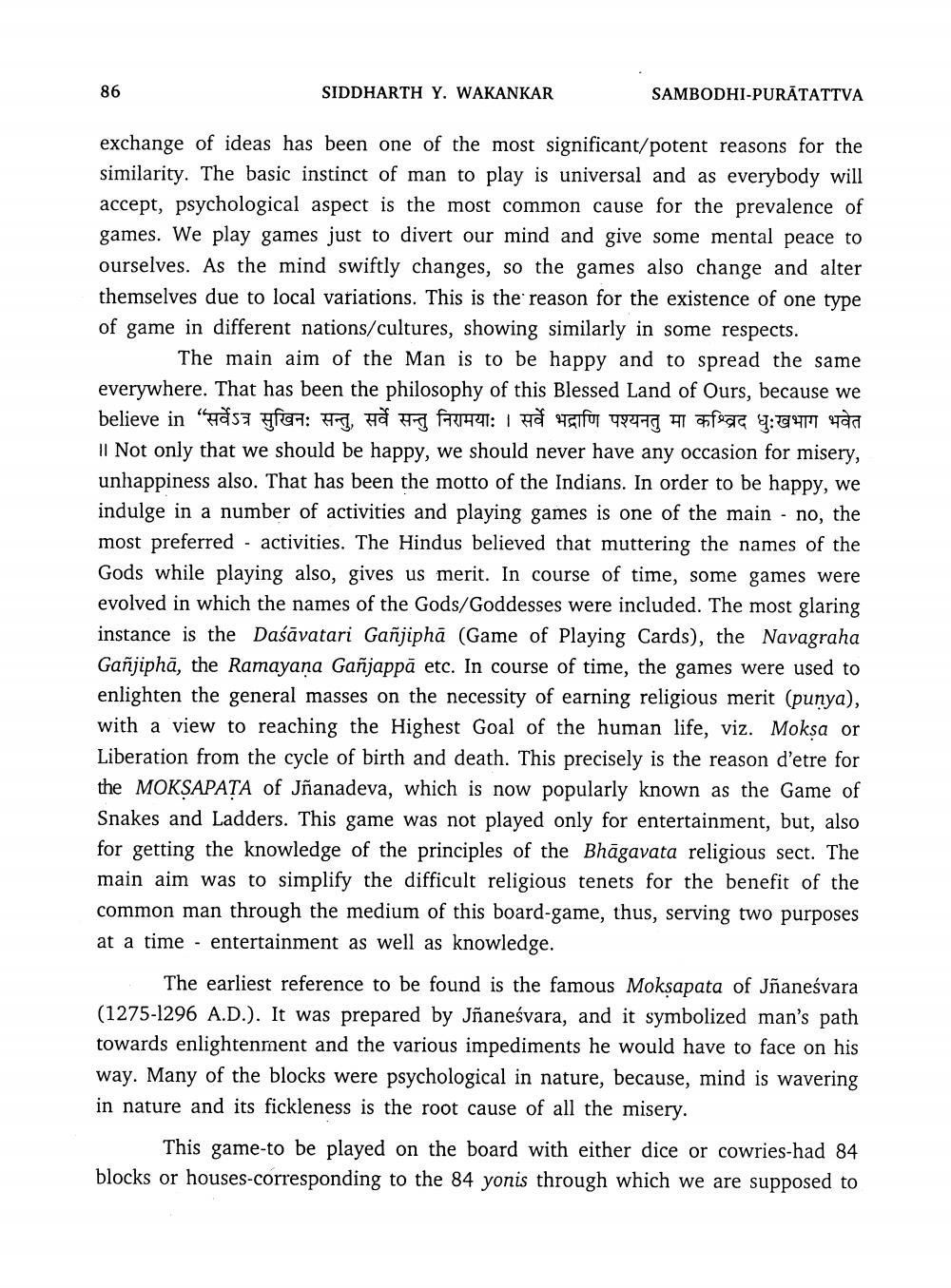________________
86
SIDDHARTH Y. WAKANKAR
SAMBODHI-PURĀTATTVA
exchange of ideas has been one of the most significant/potent reasons for the similarity. The basic instinct of man to play is universal and as everybody will accept, psychological aspect is the most common cause for the prevalence of games. We play games just to divert our mind and give some mental peace to ourselves. As the mind swiftly changes, so the games also change and alter themselves due to local variations. This is the reason for the existence of one type of game in different nations/cultures, showing similarly in some respects.
The main aim of the Man is to be happy and to spread the same everywhere. That has been the philosophy of this Blessed Land of Ours, because we believe in “सर्वेऽत्र सुखिनः सन्तु, सर्वे सन्तु निरामयाः । सर्वे भद्राणि पश्यनतु मा कश्विद धु:खभाग भवेत Il Not only that we should be happy, we should never have any occasion for misery, unhappiness also. That has been the motto of the Indians. In order to be happy, we indulge in a number of activities and playing games is one of the main - no, the most preferred - activities. The Hindus believed that muttering the names of the Gods while playing also, gives us merit. In course of time, some games were evolved in which the names of the Gods/Goddesses were included. The most glaring instance is the Daśāvatari Gañjiphā (Game of Playing Cards), the Navagraha Gañjiphā, the Ramayana Gañjappă etc. In course of time, the games were used to enlighten the general masses on the necessity of earning religious merit (punya), with a view to reaching the Highest Goal of the human life, viz. Moksa or Liberation from the cycle of birth and death. This precisely is the reason d'etre for the MOKȘAPAȚA of Jñanadeva, which is now popularly known as the Game of Snakes and Ladders. This game was not played only for entertainment, but, also for getting the knowledge of the principles of the Bhāgavata religious sect. The main aim was to simplify the difficult religious tenets for the benefit of the common man through the medium of this board-game, thus, serving two purposes at a time - entertainment as well as knowledge.
The earliest reference to be found is the famous Moksapata of Jñanesvara (1275-1296 A.D.). It was prepared by Jñaneśvara, and it symbolized man's path towards enlightenment and the various impediments he would have to face on his way. Many of the blocks were psychological in nature, because, mind is wavering in nature and its fickleness is the root cause of all the misery
This game-to be played on the board with either dice or cowries-had 84 blocks or houses-corresponding to the 84 yonis through which we are supposed to




